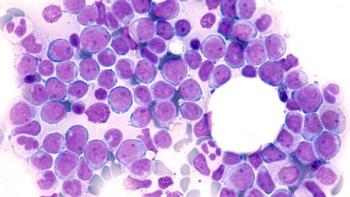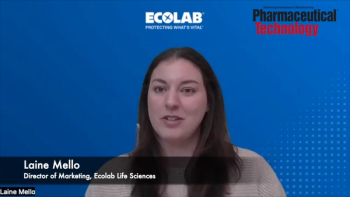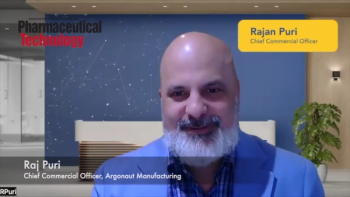
Understanding the Operational Impacts of the 15% US-EU Pharma Tariff Cap
The US-EU pharma tariff cap has been finalized at 15%, impacting manufacturing, supply chain, and quality and promoting domestic production and resilience.
The recent finalization of a trade deal between the White House and the European Union, which sets a 15% cap on pharmaceutical imports, carries significant implications for pharmaceutical technology, manufacturing, and supply chain strategies (1). This development, contrasting sharply with earlier proposals that threatened tariffs as high as 250% (2), shifts the landscape for bio/pharma professionals focused on drug development, manufacturing, outsourcing, and quality systems.
Supply Chain Vulnerabilities and Manufacturing Cost Structures
The impact of tariffs on the pharmaceutical supply chain is highly dependent on where in the chain they are applied (3). While tariffs on APIs are expected to have a minimal impact on the total cost of a finished drug due to APIs contributing relatively little to overall costs, tariffs on finished pharmaceuticals or key components could significantly raise manufacturing expenses (2). Such components as bottle plugs, closures, molded parts, and glass represent a substantial portion of overall manufacturing costs. This highlights the critical need for agile, precise, and efficient quality control methods, as well as robust supply chain resilience, to preserve product integrity and meet timelines, especially for life-saving treatments (2,4).
Strategic Manufacturing and Onshoring Initiatives
The discussion around tariffs also underscores the argument for domestic pharmaceutical manufacturing (2). Experts note that a direct impact throughout the supply chain from tariffs could prompt a re-evaluation of manufacturing locations. This aligns with growing interest in onshoring, where shifting drug manufacturing to domestic Contract Development and Manufacturing Organizations (CDMOs) can lead to improved quality, reduced rework, and enhanced long-term efficiency (5,6). Companies like AbbVie are already investing in US API manufacturing, with a commitment of $195 million in its North Chicago plant as part of a larger $10 billion capital investment for expanding US innovation and manufacturing capacity (7,8). Such investments support the idea that while much of the research and development is conducted in the United States, greater domestic production capacity could mitigate risks associated with international trade fluctuations (2,7,8).
Emphasizing Innovation and Quality Systems
These trade dynamics reinforce the importance of early formulation planning, novel platforms, and tailored approaches to secure long-term intellectual property protection against generics (9,10). Furthermore, collaborative innovation in CDMOs, focusing on early engagement, IP strategy, and advanced formulation, is crucial for redefining partnerships in bio/pharmaceutical development (11,12). Maintaining high-quality systems, including environmental audits and waste reduction, also plays a role in enhancing supply chain security and reshaping priorities in pharmaceutical manufacturing (13,14). As the industry navigates these trade agreements, the emphasis on robust manufacturing processes, resilient supply chains, and adherence to stringent quality control will be paramount for delivering treatments effectively (4).
- The White House.
Joint Statement on a United States-European Union Framework on an Agreement on Reciprocal, Fair, and Balanced Trade . Press Release. August 21, 2025. - Saraceno, M.
Trump: Tariffs Could Potentially Hit 250%. Pharmaceutical Commerce . August 7, 2025. - Cole, C.
Tariffs & Trade Policy: What to Watch for, Cost Impacts, and Supply Chain Strategies . PharmTech.com. July 24, 2025. - Menon, A.
Optimizing Testing in Cell and Gene Therapy: A Key Driver for Industry Growth and Adoption . PharmTech.com. August 11, 2025. - Mirasol, F.
The Evolving Landscape of Rare Disease Pharmaceuticals (Part 1) . PharmTech.com. August 11, 2025. - Cole, C.
Onshoring’s Unexpected Benefits: Quality, Efficiency, and Supply Chain Resilience . PharmTech.com. August 14, 2025. - Lavery, P.
AbbVie to Invest $195 Million in US API Manufacturing . PharmTech.com. August 13, 2025. - Lavery, P.
BARDA Pulls Plug on Vaxart Oral COVID Vaccine Trial After mRNA Rollback . PharmTech.com. August 12, 2025. - Cole, C.
Intellectual Property as a Core Strategy in Drug Formulation and Development . PharmTech.com. August 18, 2025. - Haigney, S.
In Europe, the Use of Titanium Dioxide in Drugs Will Continue . PharmTech.com. August 15, 2025. - Cole, C.
Collaborative Innovation in CDMOs: Dave Miller, PhD, on Early Engagement, IP Strategy, and Advanced Formulation . PharmTech.com. August 12, 2025. - Mirasol, F.
Nxera’s New GLP-1 and GPCR-Targeted Drug Programs Aim to Advance Obesity and Metabolic Disorder Therapies . PharmTech.com. August 11, 2025. - Cole, C.
Sustainability Becomes Essential: Green Manufacturing and Supply Chain Resilience in Bio/Pharma . PharmTech.com. August 15, 2025. - Mirasol, F.
EMA Grants Orphan Designation to Rilzabrutinib for IgG4-Related Disease . PharmTech.com. August 15, 2025.
Newsletter
Get the essential updates shaping the future of pharma manufacturing and compliance—subscribe today to Pharmaceutical Technology and never miss a breakthrough.




